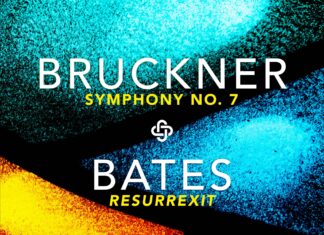Review – Beethoven, Symphonies 1-9, Marek Janowski/WDR Symphony Orchestra Cologne, WDR Rundfunkchor Köln NDR Chor / Christian Elsner, Andreas Bauer Kanabas, Regine Hangler, Wiebke Lehmkuhl
Janowski’s is a solid, recommendable set with distinctive playing from the WDR orchestra and, being a Pentatone release, it’s also brilliantly recorded. This is big-band Beethoven but HIP-influenced, which can only be a good thing since it offers a combination of both worlds: the full sound that the odd-numbered symphonies require, along with the transparent textures and fast tempi that are the norm these days.
Take the First Symphony, for example. The finale bounces off rhythmically, the timpani punchy and precise, the composer’s sense of humour effectively underlined. Or the Second Symphony, which really needs the oomph Janowski provides in the first movement or the lush string textures in the beautiful Larghetto – for me one of Beethoven’s most underrated creations. And yes, there might be accounts of the finale that are more dramatic, but overall all the right balances are in place.
As for the Eroica, it does benefit from the rich orchestral forces but, unfortunately, this (along with the 7th) is the only let-down in this otherwise splendid cycle. Not that these are poor performances — on the contrary, they are undoubtedly excellent. But they miss the Sturm und Drang madness that is such an essential ingredient in these works. Take the Funeral March of the Eroica, for example, where the climaxes sound oddly understated. Or the Allegretto of the 7th, which again lacks a certain rhythmic drive (perhaps it’s no coincidence that the timpani in both these examples are too subdued).
As for the 5th and 6th, I had already reviewed both when they were previously released, and they are top-rate performances (you can read my full review here). And the same can be said for the 4th: all the boxes are ticked, the finale featuring some quality playing from the WDR wind section. I find that the weighty sound in the 8th suits the nature of the symphony which is sometimes presented as Beethoven-light in most HIP cycles: well, not here, Janowski manages to keep both full forces and driving tempi throughout.
And speaking of full forces, I can say that the 9th is the highlight of this set and among the best 9ths I’ve heard recently. The conductor allows the WDR players to unleash their raw energy in the first movement, which here features a cataclysmic recapitulation and a well-judged coda. The Molto Vivace second movement has all the bite one would expect, and the lush string playing in the Adagio Molto e Cantabile is what is missing from most modern accounts of this symphony. In fact, Janowski and his WDR team made me listen to the third movement afresh, not because it has the element of new but because such characterful orchestral contribution -that reminds us of the great performances of the past- is hard to find nowadays in Beethoven. And if you listen to the choral finale, you will realise that the same powerful orchestral forces are now joined by an equally impressive choir and expressive singing from the soloists. If you don’t want to buy a new set of the Beethoven symphonies, you might wish to wait and see if Pentatone will release the 9th individually, or just stream it on the streaming services — it is that good!
As I’ve stated in my introduction, this is an excellent modern set of the Beethoven symphonies with only a couple of curious imbalances. While Janowski goes all the way, offering us a no-holds-barred approach in most symphonies, the 3rd and the 7th receive a tamer treatment. But the rest are top-notch renditions, with some very distinctive, poignant playing from the WDR Orchestra—in fact, I’d say that the quality of sound the orchestra produces is what sets these performances apart. Recommended.
Reference recordings: Barenboim/Staatskapelle Berlin, Karajan/BPO (60s or 90s), Blomstedt/Staatskapelle Dresden, Wand/NDR
HIP set: Krivine/La Chambre Phlharmonique







[…] the top European chamber orchestras. When compared to other recent sets (such as the Janowski – reviewed here), König takes more interpretative liberties, and his approach sounds refreshing overall. Take the […]